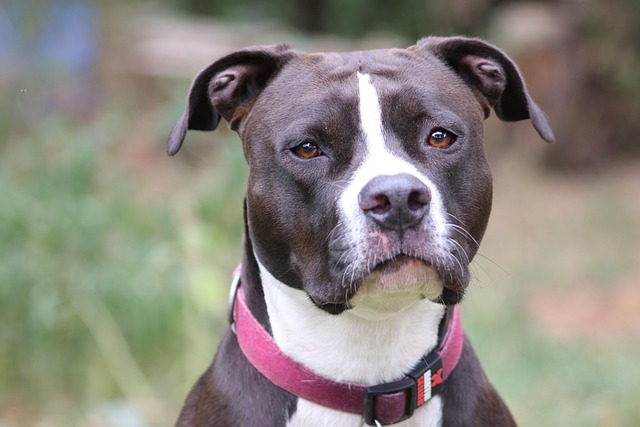
How can I tell if my dog's heatstroke is serious
Let’s be real: It’s a sticky August morning in Los Angeles, and you took your 2-year-old Golden Retriever, Max, for a walk a little later than usual
When your dog’s bright eyes start to cloud, water excessively, or show signs of discomfort, it’s natural to feel a pang of worry. Their eyes are windows to their vibrant personalities, and proactive care can keep them sparkling. Let’s dive into simple, heartfelt strategies to safeguard your pup’s eye health, rooted in responsible ownership and the everyday routines that define loving care.
Start with gentle daily hygiene. A soft, damp cloth can wipe away crust or debris from the corners of their eyes. Do this gently, in the direction of hair growth, to avoid irritation. For breeds prone to tear stains—like Bulldogs or Poodles—use vet-approved eye wipes designed to reduce bacteria and discoloration. This small ritual not only keeps them clean but strengthens your bond through quiet, attentive moments.
Understand your breed’s unique risks. Brachycephalic dogs often face protruding eyes, making them more vulnerable to scratches or dryness. Regularly check for redness or discharge, and avoid activities that could cause eye trauma, like rough play with energetic pups. Herding breeds, meanwhile, may encounter grass seeds or debris while working—always inspect their eyes after outdoor adventures in tall grass.
Environmental triggers play a big role. Just like us, dogs can suffer from seasonal allergies that cause itchy, watery eyes. Keep windows closed during high-pollen days, and wipe their paws and face after walks to remove allergens. Be cautious with household irritants too: cigarette smoke, strong cleaning fumes, or even scented candles can inflame sensitive ocular tissues. A little mindfulness about their surroundings goes a long way.
 Diet is key to long-term eye health. Foods rich in omega-3 fatty acids support tear production and reduce inflammation. Vitamin A, found in sweet potatoes or liver, promotes corneal health. If you’re unsure about their diet, chat with your vet—they can recommend balanced meals that meet nutritional standards while addressing your dog’s specific needs.
Diet is key to long-term eye health. Foods rich in omega-3 fatty acids support tear production and reduce inflammation. Vitamin A, found in sweet potatoes or liver, promotes corneal health. If you’re unsure about their diet, chat with your vet—they can recommend balanced meals that meet nutritional standards while addressing your dog’s specific needs.
Know when to seek professional help. Persistent squinting, cloudy eyes, or sudden swelling aren’t issues to wait on. Eye infections or ulcers can escalate quickly, and over-the-counter drops meant for humans can be dangerous for dogs. Vets can prescribe safe, legally compliant treatments like antibiotic ointments or lubricating gels. Prompt action shows you’re prioritizing their well-being, and early intervention often leads to faster recoveries.
Preventive care builds trust and wellness. Schedule annual eye exams with your vet, especially for senior dogs or those with a history of eye issues. These checkups can detect early signs of glaucoma or cataracts, when treatment is most effective. Also, invest in protective gear for active dogs—like dog goggles for hiking or swimming—to shield their eyes from debris or UV rays. It’s a practical way to say, “I want you safe while we explore.”
Caring for your dog’s eyes is an act of love, woven into the rhythm of daily life. By staying vigilant, adapting to their breed’s needs, and partnering with veterinary experts, you’re ensuring they see the world clearly—and keep that playful glint in their eyes for years to come. Every gentle wipe, every thoughtful adjustment to their environment, strengthens the promise you made to keep them healthy. After all, their gaze reflects the joy you bring them—and that’s worth protecting.

Let’s be real: It’s a sticky August morning in Los Angeles, and you took your 2-year-old Golden Retriever, Max, for a walk a little later than usual

You're enjoying a summer afternoon at the park when you notice your dog has stopped panting and appears disoriented - their gums are bright red

Let’s paint the picture: You’re in your Denver apartment, watching your 4-year-old Boston Terrier, Ruby, plop down mid-play session with her favorite toy

Many dog owners notice their pets nails seem shorter after regular walks,but how much does this daily activity actually help?The answer depends on where you walk—concrete sidewalks or asphalt streets gently file nails as a dog's paws hit the ground

Most dog owners notice their pup scooting across the carpet at some point, but few connect it to impacted anal glands. These small sacs near a dog’s rectum secrete a scent for marking territory

Most vets agree that regular dog teeth cleaning is key to avoiding painful dental issues later. For healthy adult dogs, a professional cleaning at the vet’s office every 12 to 18 months usually works well.